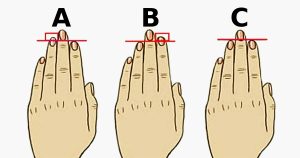Computer scientists from Austria have created a shoe that can help blind people avoid obstacles while walking. The shoes, which would cost more than $3,000 a pair, could have a lasting impact on the blind by helping them navigate the world around them without hitting objects or bumping into things. The new product, which is called InnoMake, was invented by tec-Innovation, an Austrian company, and also received support from the Graz University of Technology to make the innovation work well.

“Ultrasonic sensors on the toe of the shoe detect obstacles up to four meters [13 feet] away,” said Markus Raffer, a founder of Tec-Innovation, who is himself visually impaired. “The wearer is then warned by vibration and/or acoustic signals. This works very well and is already a great help to me personally.”
For the high price tag, people can get one sensor per foot. The sensors can come with a pair of shoes or be installed on an existing pair. The sensors also come with a USB cable to charge the shoes when not in use.
The sensors combine two pieces of information to give the wearer better information about their immediate environment. Sensors work to detect whether there are objects in the way, as well as being able to use the technology to detect the nature of the object. The intelligent shoes for the blind can also tell if there is a hole in the ground or stairs leading downward or upward, giving different warnings for each.
“Not only is the warning that I am facing an obstacle relevant, but also the information about what kind of obstacle I am facing, because it makes a big difference whether it’s a wall, a car, or a staircase,” said Raffer.
Right now, Tec-Innovation has only created one version of the “approved medical device.” However, the group plans to take their learnings and innovate on the existing design to make it even better for the next iteration. These forthcoming variations will include camera-based recognition software as well as machine learning to help the wearer navigate their environment even better than the existing version.
“We have developed state-of-the-art deep-learning algorithms modeled on neural networks that can do two main things after detecting and interpreting the content of the image,” said Friedrich Fraundorfer at TU Graz. “They use camera images from the foot perspective to determine an area that is free of obstacles and thus safe to walk on, and they can recognize and distinguish objects.”
“As it currently stands, only the wearer benefits in each case from the data the shoe collects as he or she walks,” said Fraundorfer. “It would be much more sustainable if this data could also be made available to other people as a navigation aid.”






